How electroscooters captured Silicon Valley, and why they are hated
Previously, many believed in Segway’s great future - as long as the owner of Segway Inc. did not move it from the cliff. Further, in the early 2010s, among the advanced youth, gyrobords became popular. Even later, the “hippie” trend for moving around the city became electric cases - largely due to the popularity of Casey Neustat, who shows on his YouTube channel how they can be driven around New York faster than cars.
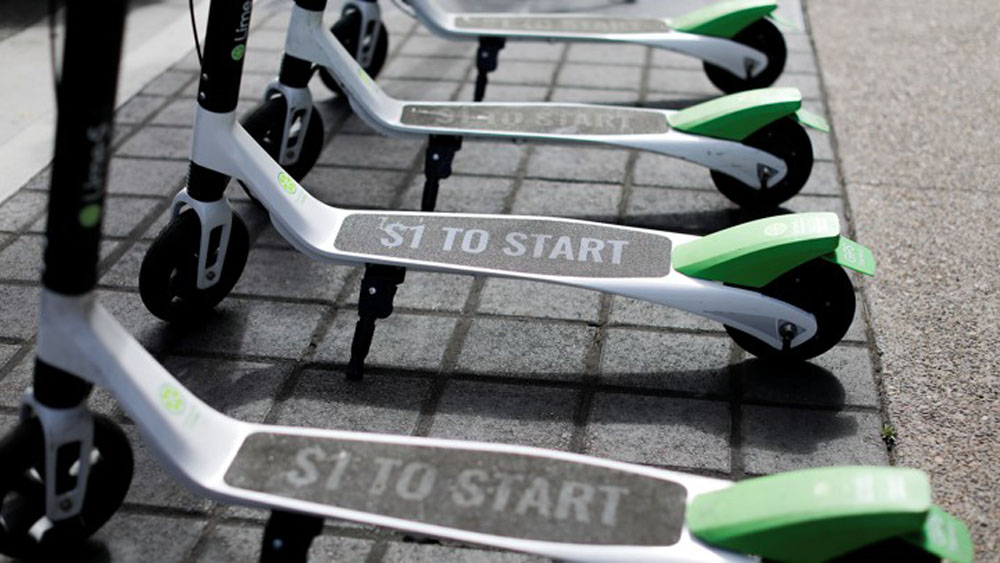
But now all the most expensive startups that produce physical things, rather than working on sites or services, relate to electric scooters. There are already several “unicorns” - companies that are worth more than $ 1 billion. And they say this is only the beginning, and even Uber with Lyft needs to be on the alert. But why such money is poured into scooters, and not in skateboards, scooters or bicycles? And will it not become with them the same as with segway?

It is difficult to come up with a more “childish” means of transportation than a scooter. Perhaps only a tricycle. Or the stroller that your mom is pushing. And yet, in the past few years, scooters have become the main favorites of Silicon Valley. They invest hundreds of millions. They are taken to work by the CEOs of large companies; with their help, serious American uncles and aunts ride around the city. The rental service of scooters Lime received from investors $ 250 million with an estimate of $ 1 billion. Its competitor, Bird, announced plans to increase its value to $ 2 billion in a month. He will sell the shares for $ 150 million, and no one has any doubt that investors will buy them up. Bird attracted the previous $ 150 million less than a month ago, at the end of May, and then it was valued at $ 1 billion. Double your cost in two months — why not any company’s dream?

There are no questions that Bird is just another scam, like sex toys with Wi-Fi or a juicer with cartridges . The main investor of the startup is the well-known venture fund Sequoia Capital, which previously supported Google, PayPal, YouTube, LinkedIn, Dropbox, Instagram and other highly successful projects. And the founder of the scooter company is Travis Wanderzanden, who previously worked as a top manager at Uber and Lyft. Wanderzanden says his electric scooters have every chance of getting around even these private taxi companies and becoming one of the most successful startups in the valley.
Even without a feather, scooter startups are already expanding to become the first in new markets. Lime launched two hundred electric scooters in Paris and is testing Zurich, Bird is also making development plans in Western Europe. And literally a month ago, Delisamokat and YouDrive.Lite broke into Moscow, plus the appearance of Scooter Schering. At the same time, it seems that the new craze has arisen from nowhere, literally out of the blue.
Why scooters?
When you need to drive through the city literally a couple of blocks, the car is a rather inconvenient thing. First, it must be parked (that is, find parking, pay for parking, often go from parking to the place you want ...). Secondly, the car - a thing rather massive, and, accordingly, consumes a lot of gasoline or electricity. For the sake of moving a few kilometers - it is clearly not worth it when there are cheaper, lighter and even potentially faster alternatives.
As such alternatives, many have seen segway or gyrobord, but as a comfortable means of movement for the masses of people they are not suitable for a number of reasons. The most important thing is that they need to be able to use, they are not always clear for the beginner from the first time. A driver's license for these vehicles do not ask a person. If someone falls from the gyroboard, or breaks it, or simply remains dissatisfied with the work of his device - this is an overlay for the company.

Girobord was recognized to be so unsafe that in many countries its operation was banned both on highways and on sidewalks. In Britain, for example, they can be used only in private territories - and only with the consent of the owner.
In addition, segways and especially gyroboards do not provide the desired speed. It makes no sense to pay for the service, if your own quick step takes you to your destination almost at the same time.
In China, instead of hoverboards, segways and gyroboards, monowheels are very popular, they are used as daily urban transport and during walks. But, like the gyroboards, there are plenty of cons. When driving a monowheel, the main danger is hitting a small obstacle: in this case, the wheel slows down dramatically and does not keep pace with the rider leaning forward due to inertia, which makes it fall. A sharp bend forward or acceleration when the monowheel is already traveling at high speed - bears the real risk of falling or breaking.
The makers of electric scooters say they are safer than any alternatives, even scooters and motorcycles. A small bump on the way here is not as lethal as that of a monowheel and a gyrobord: a person has a solid platform on which to stand, and handles to hold on to. If the device itself survives the collision, then the rider will be able to sit on it.
Driving a scooter does not need to teach anyone, there is no problem even for those who can not cope with riding a bike. And the speed develops up to 24-35 km / h, which is more than enough for driving on city streets.

And, of course, the hidden reason why now many experienced start-upers (and investors) have taken on scooters is that this is the only niche that has remained open. Bicycle and car sharing market was already busy and justified. Companies began to bring the first good profit. Therefore, investors from Silicon Valley believe that the use of the same proven model on scooters can give quick and easy results. And they are pumping Bird, Lime, Spin and other hundreds of millions of dollars, despite the fact that they are still only at the beginning of their path, and so far they are faced with problems that are quite unique in their sphere.
How it works (and does not work)
Everything is standard, according to the model of car sharing companies. People download the app for their smartphone. Go to the scooter, which is shown on the map. If they can't find it, they turn on the siren (it's usually very loud with scooters, for reasons that are further on). On the device - QR-code, which you scan to turn it on and start rolling. In Russia, the price starts from 2 rubles per minute, in the States - from 15 cents (plus $ 1 for the fact of rent).

The launch of Delisamokat in Moscow was not the smoothest . But his foreign colleagues, the situation is, in fact, not better. The problem with companies is that scooters are very light and invisible, even in comparison with bicycles. And now, let's simulate the situation. Even if you are a law-abiding resident. Want to ride around the city. But, of course, not only to go, but also to go to different places - either to the cafe, or to the cinema, or to look into the store. To pay for a scooter every minute, even when you do not use it, is somehow silly. And if you disconnect from it - it will appear on the card from the next user, so they will leave with him, and you will have to look for a new device from scratch.
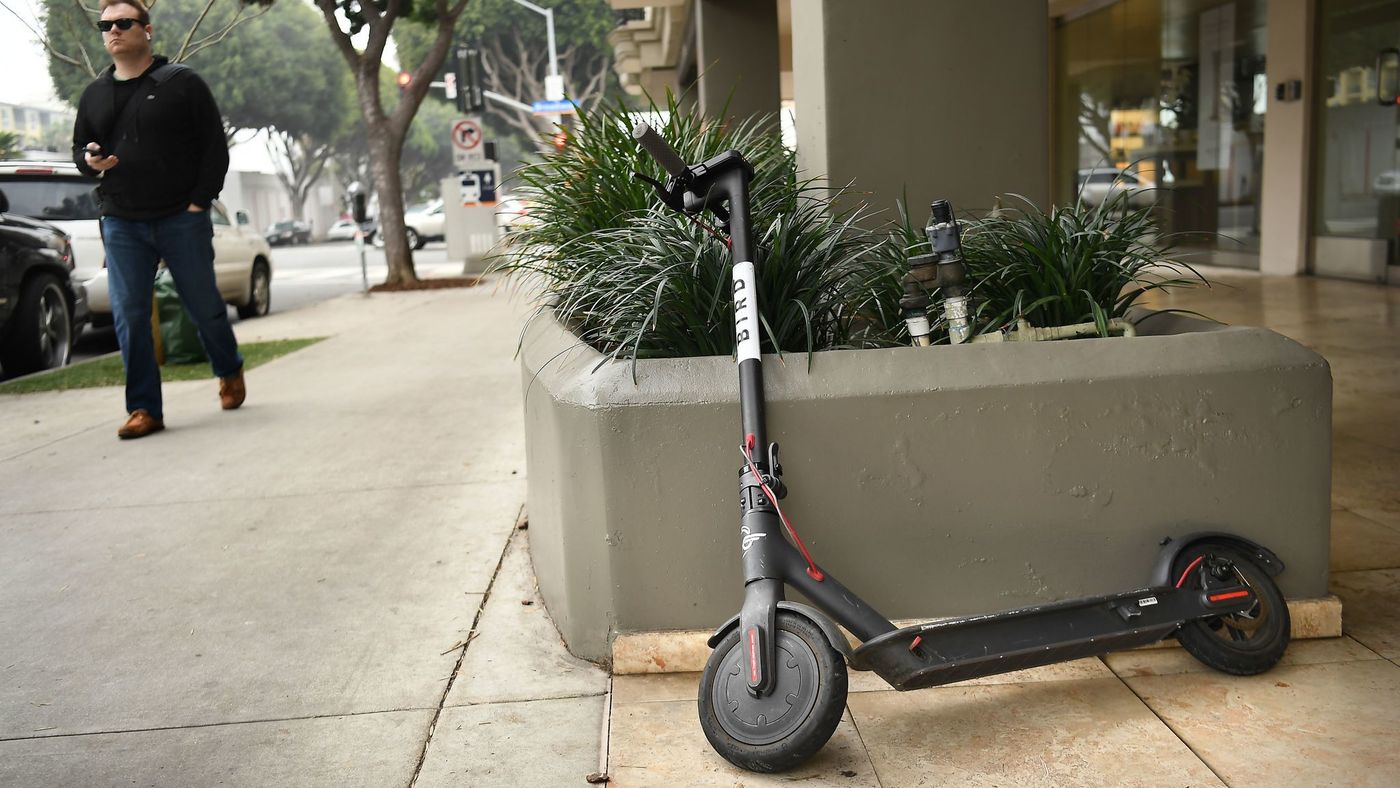
But although you are law-abiding, but not stupid, right? And you just hide "your" scooter in some neighboring bush, where it will not be found. Go about your business for half an hour, come back - here he is, dear, who will find him! And you save at least $ 3 (a trifle, but nice).
In America, many began to do so. As a result, scooters are constantly lost - as soon as a person decided to leave the metro or call Uber, and left his rented gadget in some niche there. In order to withstand this, companies began to insert unexpectedly loud alarms into their scooters. So the next user can find them. Plus, this alarm system is turned on if someone who has not paid for the service tries to go on the device, or if the scooter is taken away in an unknown direction.
But this seemingly elegant solution entailed other, even more serious problems. Loud and nasty electric scooters, which flood the cities and “scream”, quickly became hated by the inhabitants. All around, who are not looking for a scooter, also hear the siren. And if someone siren on a car constantly scribbles under your window - you understand to what extremes this can bring a person ...
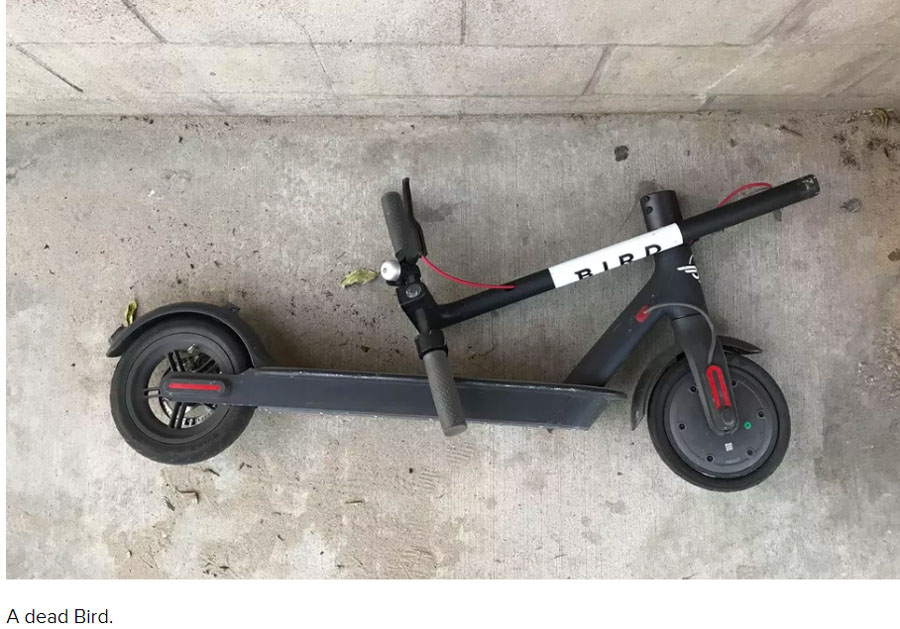
Hunters love to boast of a "padded bird"
Scooters have become the number one target for vandals. They are broken, hanged on trees, thrown into the river, smeared with mud or even worse. And then proudly share their "achievements" in social networks . In San Francisco, almost a third of electric scooters have been subjected to such treatment. During the day, a particularly enthusiastic "scooter-hater" could destroy up to a dozen devices.
Perhaps residents could adapt to these new vehicles that flooded their streets, but it all happened too quickly. The situation deteriorated sharply at the end of March, when three companies simultaneously, trying to compete with each other, brought thousands of scooters into the city. They can be left anywhere, they can (was) move along the sidewalks at a rather serious speed, they rustle with their signaling ... And gradually the residents of San Francisco hated them so much that the city authorities had to ban them (although still work). The surrounding cities in Silicon Valley, too, if not banned, then introduced a strict set of rules for scooters. Starting from - do not drive without helmets and on sidewalks, and ending with the need to have a driver's license to become a scooter
Sellers of spades during the gold rush
Bird is one of the fastest "unicorns" in history. It was valued at $ 2 billion just a year after launch. The creators of the company have already managed to sell part of their shares, and now they are guaranteed enough for the rest of their lives. But it was not only they who hit the jackpot.
First, ordinary thieves got rich. An electric scooter from the shelf costs up to $ 500, more expensive than a regular bicycle. And it's much easier to steal it. Do not even need to gnaw the chain. There are too many scooters, you can’t keep track of everyone, but you can leave them anywhere, so the company won't miss them. People just take out GPS trackers, and sell devices on eBay (and Dark Web). There are so many thieves that no more than $ 50 is given for a fresh electric scooter. But while in Bird and others “pour in” at $ 150 million per month, there are enough devices for everyone.
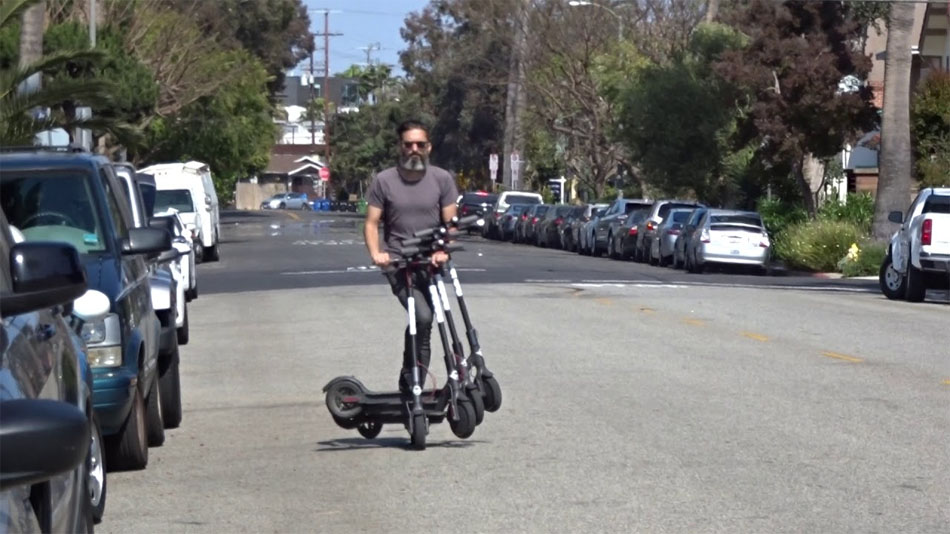
The second industry, which received a boom due to the same vandalism - repair shops. All the surrounding workshops in cities where Bird, Lime and Spin are developing repair 75-100 scooters per day, and they are filled with work for the weeks ahead. There are private masters who are paid on the number of repaired devices. Nobody names the exact price for the repair, but thousands of craftsmen suddenly decided to retrain themselves in electric scooter repairmen.
There was also a fundamentally new profitable work - “chargers” of electric scooters. To the full “tank” the device should be charged for four to five hours. Each company has an application that shows where there is a scooter with a low battery near you. A good way to “raise” a couple of extra bucks after work is to pick up such scooters by car on the way home, and charge them by morning.
Travis Wanderzanden, the head of Bird, explains:
It turns out a whole own economy, the economy of a side job. This is like a Pokemon Go game for them: they drive around the city and try to find our tired "birds" through the app.
Electric scooters can not ride after nightfall, it is against the law. Just at this time there are "rechargers". In order for them to pay, the transport must again be in the specified location by 7 am the next day. Bird gives each three charging cables. If you proved that you can rely on, you will get five more.
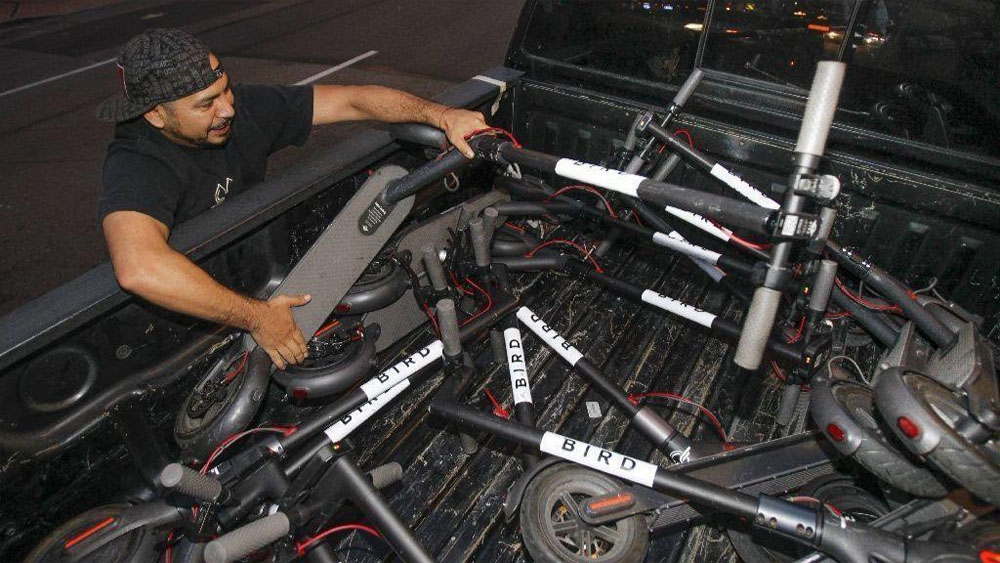
Success!
Lime pays $ 12 for each scooter charging, Spin gives $ 5. Bird has a slightly different system. You get from $ 5 to $ 25 - depending on the city and on the location of the "dead" scooter. The harder it is to find a device and the longer it remains unidentified and uncharged, the greater the profit. Finding a “pokemon” for $ 25 is very difficult, often it is some kind of scooter, thrown on a tree or thrown into a river, which you cannot reach. In fact, they say to you in the application, "we think that he is somewhere in the area, good luck."
But some rechargers have found a way to trick the system. It is called "accumulation." Here is the same meaning as in Sberbank: the longer you keep your “deposit”, the more profits drip on it. One of these “drives” explains the strategy:
We just collect the birds and put them in our pickup. And we wait until the reward for them grows several times, and then we charge.
This simple method can get $ 75 for half an hour of work. Or up to $ 200 if you have been given extra cables for charging. Bird, of course, do not like such methods. The other day, she sent an e-mail to all the "loaders", informing that if they were found for such activity, they would be banned from the application. But so far, lovers of easy money does not stop.

Bad luck :(
Why so expensive?
Car-sharing and bicycle rental services are much cheaper than some toy Lime and Bird. Paradox? Not really. Investors expect that scooters will soon become more popular and cars, and bicycles, and scooters, and everything else. In all seriousness.
The idea is that such a small convenient transport will become the basis for private movement around the city. Without exhaust and the need to independently pedal. Whether this idea of the future is worth $ 3 + billion (in which Bird, Lime and other start-ups are already valued), and the $ 500 + million investment that they have only invested since February, is a big question. Expert Thibaud Elziere , working with Internet startups, has his doubts:
Shares of bikes and scooters pave the way for a revolution in public transport. But they themselves can never justify such investments. Investors greatly overestimate the merits of these non-profit businesses.
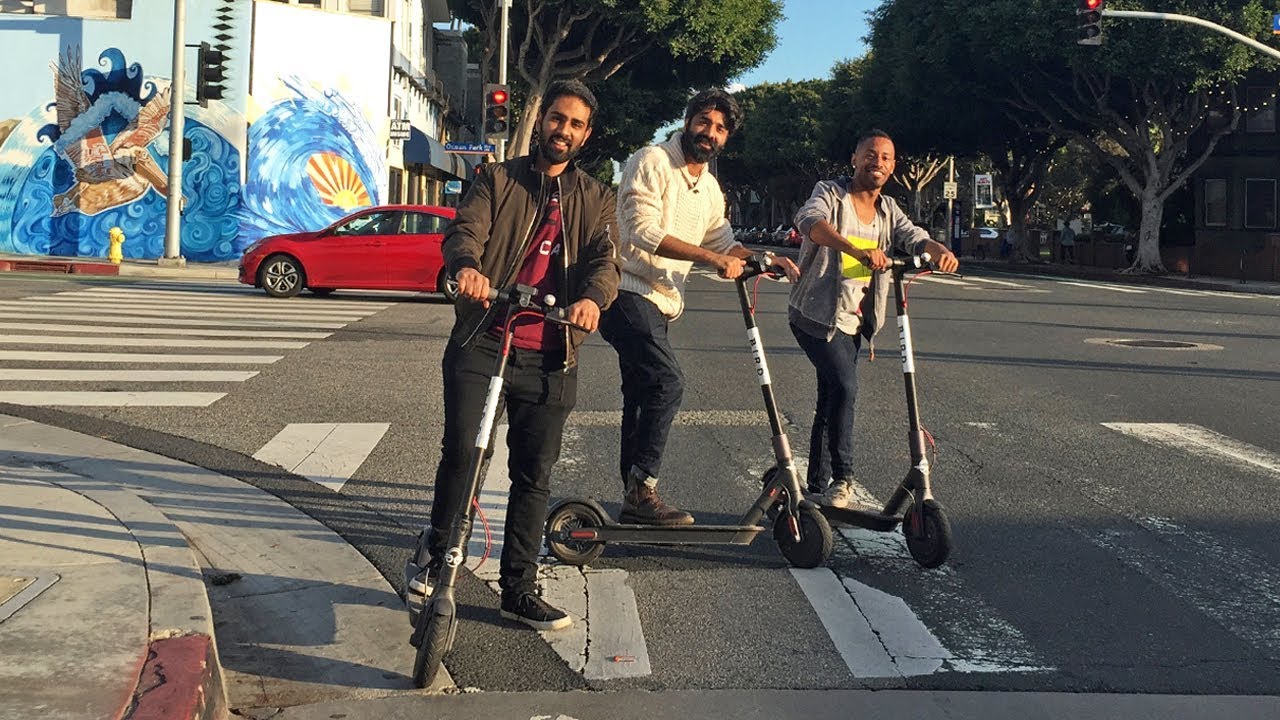
Critics say such scooters do not solve a single urban problem. Too unsafe to move over long distances, too slow, competing for space on sidewalks with pedestrians. In addition, you can not put luggage or take children. Daphni investment fund director Willie Brown tested the Lime electric scooters in Paris and said that their company would not invest money in it:
It did not seem to me that I saved some substantial time in the short run. Our sidewalks are always full of people, you can’t pick up speed here. And it's not so comfortable that I imagine myself going on a scooter for a great distance.
Brown says these startups may have a future in the US, but not in Europe. European streets are too narrow, and in cities and so well developed public transport system.
The second tester of Parisian scooters Lime shared his impressions:
Very bad. Slowly, and you need to constantly slow down, skipping people. Worst of all, it seems very dangerous. You can not brake sharply, because you just stand, nothing holds you.
The third one, who already had experience with electric scooters, received more positive impressions:
Quite cool. Slightly faster than a bicycle, you do not sweat, do not change your clothes. It's very hot in Paris and I don’t want to pedal, especially climbing the slope. I think they can fill a good niche. Maybe even replace our Paris mopeds. Only the quality of these devices seems to be not very good. At Xiaomi and Ninebot they are better, stronger, with a sharper brake.
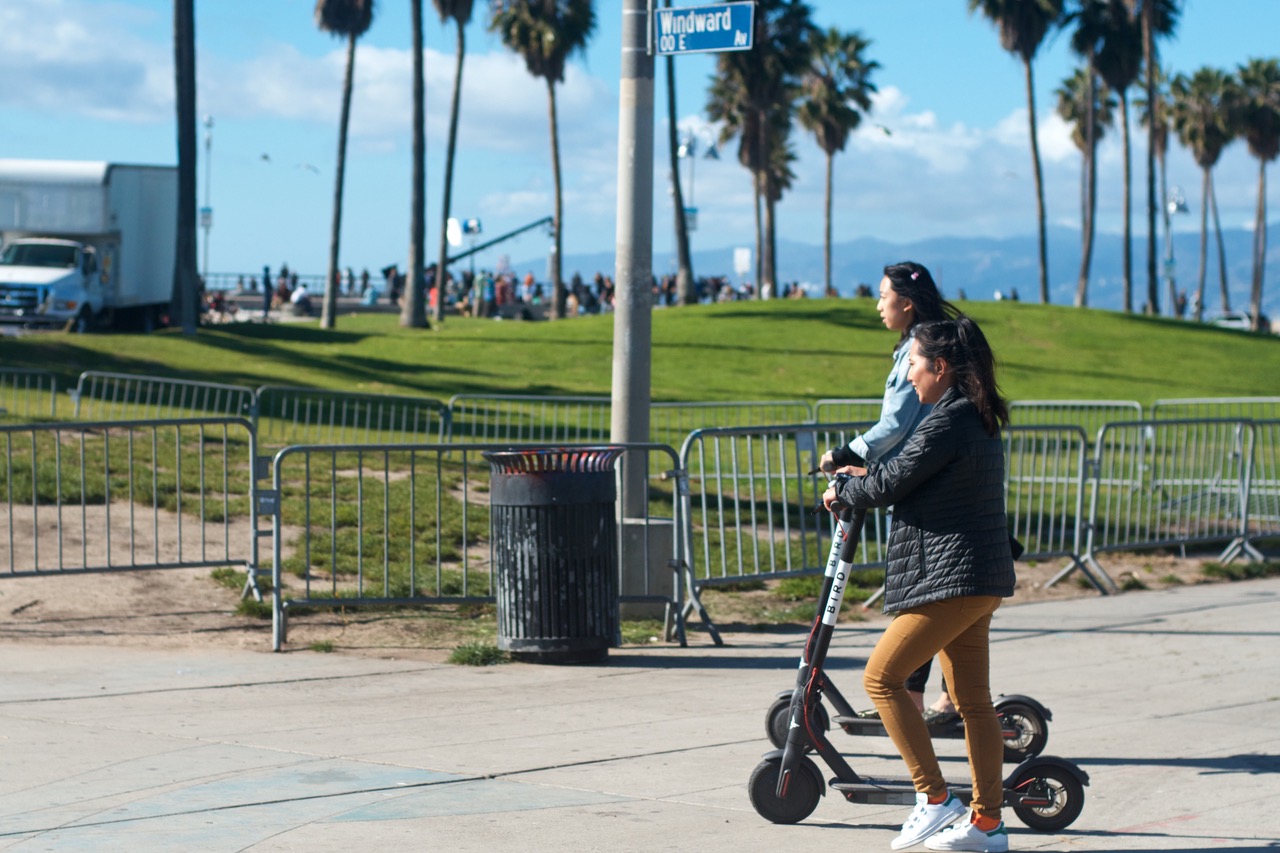
As for start-up prices, Bird and Lime point to one parameter that is often overlooked: the frequency of travel. In the future, people will take scooters for just a few minutes - to get from the house to the supermarket, for example. Rent is cheap, “jump up” on a scooter is very simple, and you do not need to get used to the seat or to the control system. The vast majority of moving around the city is within three kilometers, and here the scooters show themselves best.
And if you ride these gadgets more often, it means that the application that “opens” the scooter will be launched more often. And this in itself increases the value of any modern startups. Martin Mignot , an analyst at Index Ventures, which invested in Bird in March , explains:
If you look at how often people use Uber, Lyft or Taxify ... well, maybe two or three times a day. This is much less likely than the potential of scooters. Here you can have ten and twenty starts. This means that the applications of these companies will always be on the main screen. At the top of the food pyramid, so to speak.
Anyone can ride them. They just manage, there is nothing to learn. Scooters, unlike mopeds, can be used by teenagers. They do not require physical effort, it is better for older people than a bicycle ... People in cities will definitely drive on something. My money is that it will be an electric scooter. And, of course, not everyone will want to drag him along to restaurants, repair it, maintain it. Sharing service is much more convenient.
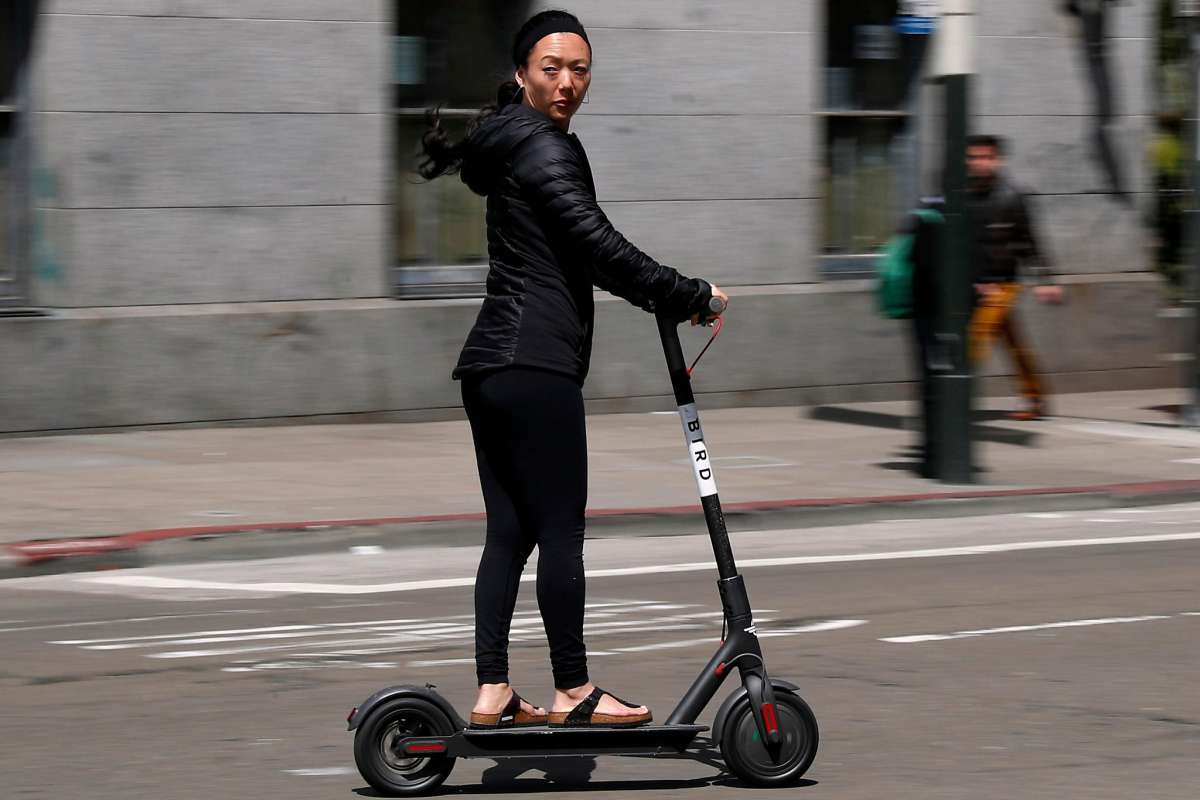
Martin Mignot expects his investment in Bird to pay for itself many times because the company is still at a very early stage of its development.
This whole situation, even with the sharing bicycle, is a phenomenon in literally the last two years. I think everyone is now just trying to adapt to this new reality - users, companies, cities. I think this is similar to the time when cars first came to our streets. Someone threw them away, claiming the horses were safer and faster. Rewind a hundred years ahead - and our cities now look quite different, and the car has become the vehicle of default. Electric scooters are now at the beginning of the same path.
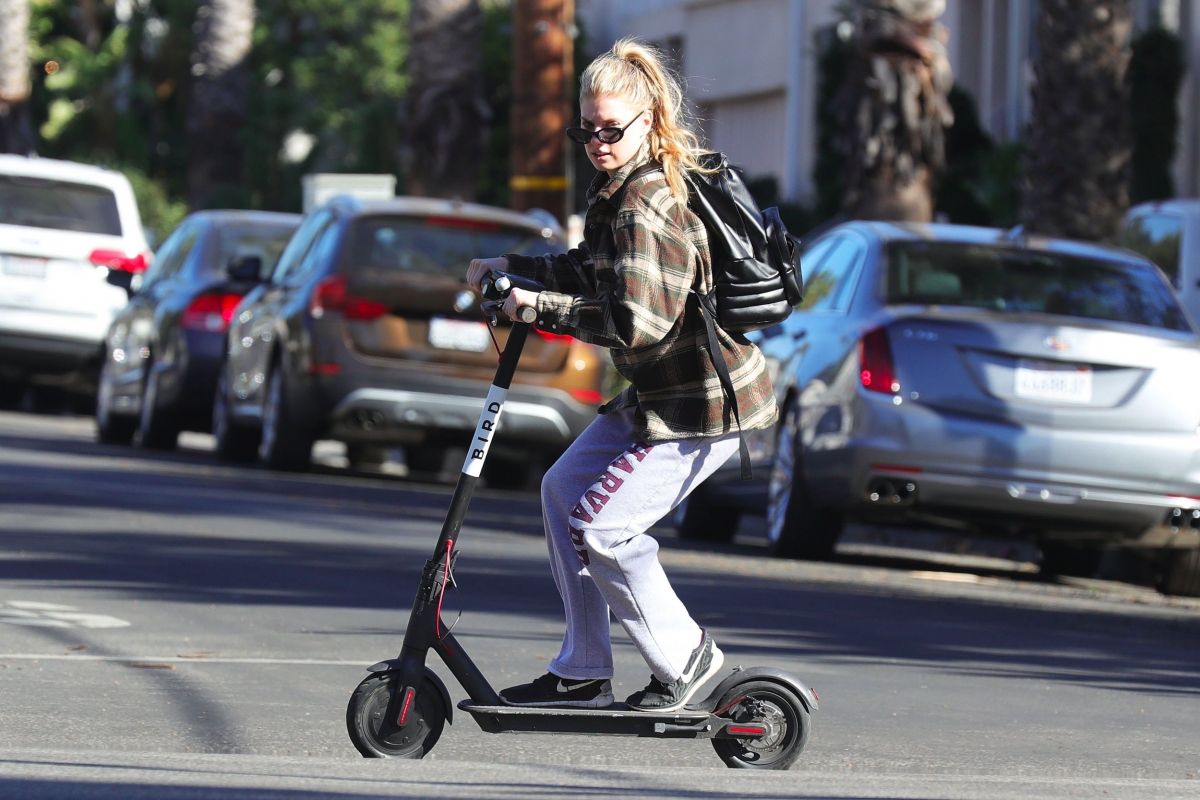
At one time, billions of dollars in the valuations of the Uber and Lyft businesses seemed crazy. They were boycotted, they were threatened, they were banned at the city level, as Bird and Lime now prohibit. Nevertheless, since then, companies have proved their success by increasing their momentum and user base many dozens of times. Could the same thing happen to electric scooters? Will people of the future ride scooters around their cities?
PS For delivery of goods from the USA to Russia there is always Pochtoy.com. Your parcels fly across the ocean for as low as $ 8.99 per pound. And to all readers who, after registering with us, enter the code “Geektimes”, we give $ 7 to the account.
